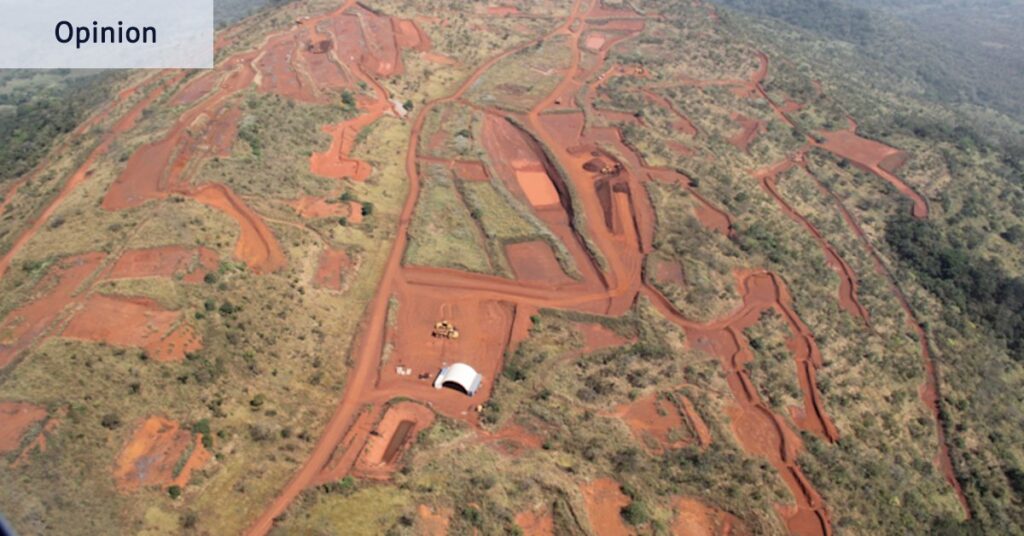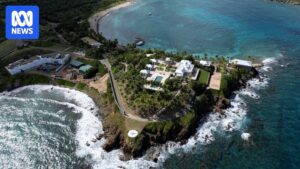
This week marked a significant milestone for the global iron ore industry as operations at the Simandou iron ore project in Guinea officially commenced. Nearly three decades after Rio Tinto identified one of the world’s richest orebodies, the project has finally taken off, promising to reshape the dynamics of the iron ore market.
The Simandou project, divided into two separate blocks, is a collaboration between a Singaporean-Chinese partnership and a consortium consisting of Rio Tinto, China’s Chinalco, and the Guinean government. It stands as one of the most expensive and capital-intensive mining projects, with costs exceeding $US23 billion. This includes the development of more than 600 kilometers of rail line connecting the mines to a new port on Guinea’s west coast.
Simandou: A Game Changer in Iron Ore Supply
On Tuesday, Simandou formally entered the industry, although it will be a few weeks before the first shipment of high-quality iron ore is dispatched. The project is expected to produce between 100 million to 120 million tonnes annually, potentially accounting for about 7% of the global seaborne trade in iron ore.
Chinese interests effectively control or influence 75% of this massive resource, which could nearly double the volume of iron ore production under Chinese ownership or influence. This development is poised to exert pressure on iron ore prices and enhance China’s leverage over major suppliers like Rio Tinto, BHP, Vale, and Fortescue.
Economic and Strategic Implications
Dubbed the “Pilbara Killer,” the Simandou project is expected to impact the market, though perhaps not as dramatically as the nickname suggests. The high ferrous content of Simandou’s ore, ranging from 64% to 67%, makes it attractive in an emissions-reducing environment. However, its high production costs, estimated between $US55 to $US60 per tonne, and significant shipping distances to China, limit its competitive edge.
“BHP, the industry’s low-cost producer, has all-in costs of just under $US20 a tonne. Rio’s are about $US25 a tonne and Fortescue’s about $US35 a tonne.”
While Simandou might secure higher margins by selling to “green steel” producers, it is unlikely to displace established players like BHP, Rio, or Fortescue. The Guinean government’s 15% stake further complicates any attempts to drive prices down, as Guinea seeks to maximize revenues rather than diminish them.
Challenges and Opportunities
The introduction of Simandou’s ore is likely to affect prices, but the cost advantages of Australian producers mean they can still achieve substantial margins. The real pressure may fall on marginal producers, such as Chinese domestic and Indian miners, whose costs are closer to $US80 per tonne.
China’s involvement in Simandou also enhances its bargaining power in price negotiations. Historically, China has sought to mitigate the pricing power of miners, a move exemplified by its recent halt on purchases of BHP’s Jimblebar blend. This year, BHP agreed to settle 30% of its iron ore spot trading in RMB, reducing exchange rate risks and transaction costs for China.
Strategic Moves and Future Prospects
Simandou’s development may also play into broader strategic maneuvers. Before the 2008 financial crisis, Rio Tinto’s acquisition of Alcan, partly to fend off a BHP takeover, resulted in financial instability. This allowed Chinalco to acquire a significant stake in Rio, complicating any potential capital management or acquisitions.
“Recent reports suggest that with Rio now led by a new chief executive, Simon Trott, discussions of an equity-for-assets swap with Chinalco are underway.”
Such a swap could involve Rio’s 42.5% interest in Simandou, potentially freeing up its balance sheet for future opportunities. As the project progresses, its impact on the global iron ore market and strategic alliances will continue to unfold.
The launch of Simandou marks a new chapter in the iron ore industry, with potential shifts in market power and pricing dynamics. As the project ramps up, stakeholders will closely monitor its influence on global supply chains and the strategic landscape.







